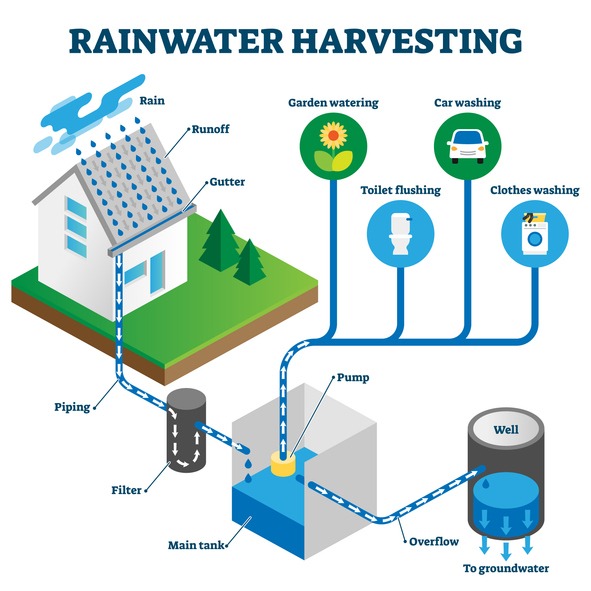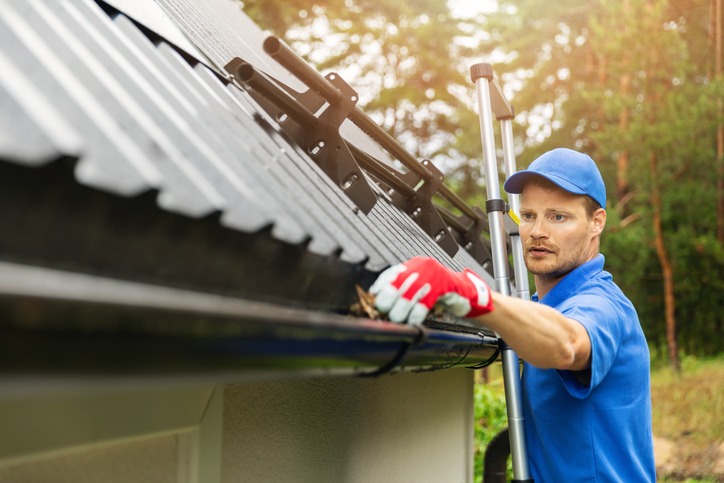Integrating your gutters for rainwater harvesting is a smart move. Seamless gutters reduce leaks, guaranteeing a smooth flow. Effective downspouts and filters mean better water quality. This integration leads to a sustainable system that’s both functional and eco-friendly. You’re not just saving money; you’re minimizing your environmental impact. With components like filters and storage units, you ensure clean, efficient rainwater collection. Use this harvested rainwater for gardens or emergencies, promoting sustainable living while easing the strain on traditional water sources. Regular maintenance keeps the system running smoothly. Uncover the full potential of this integration to truly benefit.
Key Takeaways
- Seamless gutters minimize leaks, ensuring efficient rainwater capture and flow.
- Downspouts and filters play a crucial role in maintaining water quality.
- Proper gutter integration into rainwater systems is vital for sustainability.
- Regular maintenance, including cleaning and inspections, prolongs system functionality.
- Using harvested rainwater for gardening and flushing toilets reduces water bills and environmental impact.
Gutter Integration Basics
Gutters are the backbone of any effective rainwater harvesting setup, channeling water efficiently from your roof to storage with minimal fuss. You’ve got to get this part right to make the most of every drop of rainwater. Proper gutter integration isn’t just about slapping some channels on your roof; it’s about smart collection and management that leads to sustainability and functionality in your harvesting system.
Opting for seamless gutters is a game-changer. They cut down on leaks, ensuring that the water flows smoothly from your roof to where you need it – without waste. Think of them as the unsung heroes that keep the system tight and efficient.
But it doesn’t stop there. Marrying your gutters with effective downspouts and filters is essential. This trio works together to optimize the quality of your collected rainwater, making it suitable for a variety of uses. It’s not just about harvesting rainwater; it’s about doing it in a way that maximizes usability and minimizes hassle.
In a nutshell, integrating your gutters into your rainwater harvesting system with attention to detail and smart design choices paves the way for a setup that’s not just functional but sustainable.
Environmental Benefits
Harnessing rainwater through a well-designed gutter system not only saves you money but also plays an important role in protecting our environment. By reducing reliance on traditional water sources, you’re not just cutting costs; you’re contributing to environmental sustainability. The beauty of rainwater harvesting systems lies in their simplicity and efficiency. They’re a cornerstone in the fight against soil erosion and in maintaining water quality.
When you choose sustainable gutter solutions, like those from Weatherguard Gutters, you’re opting for an eco-friendly approach that aligns with broader environmental goals. These systems help prevent runoff pollution, preserving our soil and ensuring that our natural waterways remain uncontaminated. It’s not just about the water you save; it’s about the positive impact you’re making on the world around you.
System Design and Components
A well-planned rainwater harvesting system includes essential components like catchment areas, conveyance mechanisms, storage units, and distribution networks to guarantee optimal efficiency. Your gutters are at the heart of this, serving as the primary collection system. They don’t just catch rainwater; they’re the first step in a journey that channels this precious resource right to your storage tanks.
But it’s not just about having gutters; it’s about integrating them with downspouts and filters to form an efficient collection and transportation network. These components work together to make sure that the rainwater harvested is clean and directed efficiently from your rooftop to the storage area.
| Component | Function |
|---|---|
| Gutters | Capture rainwater from the roof. |
| Downspouts | Channel water from gutters to storage or ground. |
| Filters | Remove debris and contaminants from collected water. |
Usage and Applications
Capturing rainwater opens up a multitude of uses, from watering your garden to flushing toilets, making it an indispensable resource in both homes and communities. By utilizing rainwater, you’re stepping into a world of sustainable living, where every drop of harvested rainwater reduces the strain on the traditional water supply. This eco-friendly practice not only addresses water scarcity but also meets various household water demands with ease.
Imagine your garden thriving on rainwater, or your car gleaming from an eco-conscious wash. That’s the beauty of rainwater harvesting. It’s not just about saving water; it’s about transforming how we use it. By integrating rainwater harvesting systems with your gutters, you’re contributing to water conservation on a broader scale, ensuring that every rainfall contributes to lessening the water demand in urban and rural settings alike.
In times of emergency, this harvested rainwater becomes a crucial backup, providing you with a water supply when it’s most needed. The versatility and applications of collected rainwater are vast, supporting a range of eco-friendly practices that bolster our resilience against water scarcity.
Maintenance Best Practices
To keep your rainwater harvesting system running smoothly, it’s crucial to follow a few maintenance best practices. Regular gutter inspections and cleanings can’t be overlooked; you’ll want to address these at least twice a year. This routine prevents clogs, ensuring your rainwater flows at its best. Don’t let overhanging branches linger near your gutters. Trimming them back minimizes debris accumulation and wards off potential blockages.
Always be on the lookout for leaks, rust, or damage in your gutters and downspouts. These issues can compromise your rainwater collection system’s integrity if they’re not addressed promptly. Installing gutter guards is a wise move. They reduce the buildup of leaves, twigs, and other debris that hinder water flow.
Don’t shy away from professional gutter maintenance services. They provide thorough cleaning and the necessary repairs to keep your rainwater harvesting system in top shape. Remember, a little upkeep goes a long way in ensuring your system’s efficiency and longevity. Stick to these maintenance guidelines, and you’ll avoid the common pitfalls that can disrupt your rainwater harvesting efforts.
Frequently Asked Questions
Are Rainwater Harvesting Systems Sustainable?
Yes, rainwater harvesting systems are sustainable. They offer rainwater benefits, improve water quality, and increase climate resilience. With proper system maintenance, these systems enhance urban adaptation, have lower costs, and positive ecological impacts.
What Materials Are Environmentally Friendly for Rainwater?
For rainwater, you’ll want to use materials like recycled plastics, bamboo filters, and plant-based coatings. Green roofs and permeable pavements also help, alongside ceramic and bio-sand filters for purification. Organic materials are key.
How Do You Collect Rainwater Without Gutters?
You can collect rainwater by positioning barrels, using rain chains, and creating ground catchments. Consider rooftop gardens, contour trenches to direct runoff, water saucers, absorption pits, downspout diverters, and surface swales for efficient collection.
How Does a Rainwater Collection System Affect Water Resources?
A rainwater collection system combats water scarcity by improving water quality and aiding aquifer replenishment. It reduces urban runoff, recharges groundwater, enhances streamflow, benefits ecosystems, mitigates flood risks, preserves habitats, and bolsters climate resilience.
Conclusion
You’ve got the basics to integrate your gutters into a sustainable rainwater harvesting system. It’s not only good for the planet but also for your wallet. With the right design and components, you can use this system for various applications around your home. Remember, keeping up with maintenance is key to ensuring its longevity. So, don’t wait any longer. Start planning your system today and take a step towards a more sustainable and self-sufficient lifestyle.



